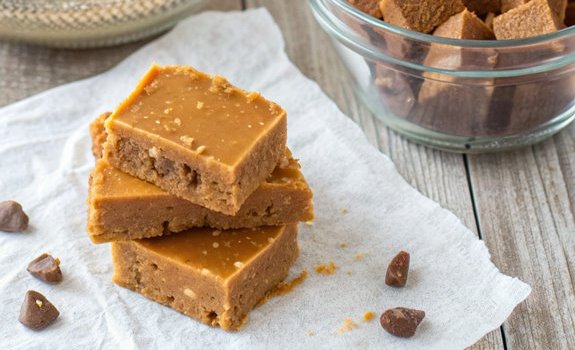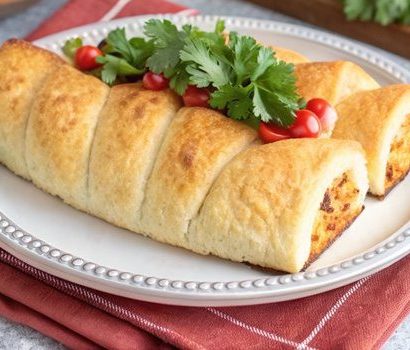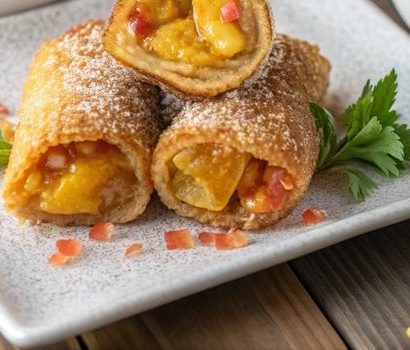Old Fashioned Fudge
If you’ve ever craved a sweet treat that takes you back in time, old fashioned fudge might be just what you need. This classic dessert combines simple ingredients like sugar, milk, and cocoa to create a rich, creamy texture. It’s all about cooking it to the right stage and then beating it to smooth perfection. Want to discover the secrets behind its making and maybe even customize your own batch? Let’s explore what makes this fudge so special.
Why You’ll Love This Recipe
When you plunge into making this old fashioned fudge, you’ll quickly discover why it’s such a beloved recipe. It uses genuine ingredients like sugar, whole milk, and butter, which reflect traditional fudge methods. The unsweetened chocolate gives it a rich cocoa flavor, while vanilla extract adds depth.
You’ll appreciate the classic techniques, like cooking the mixture to the soft ball stage, which guarantees the right texture. Patience is key here, as proper cooling and beating create that perfect fudge consistency.
Plus, the recipe’s versatility means you can customize it with different flavors, nuts, or even vegan alternatives. With proper storage, your fudge can last weeks, making it a delightful treat to enjoy over time.
History
Fudge has a rich and fascinating history that dates back centuries. The term fudge comes from the 17th century verb fadge, meaning “to fit together in a clumsy manner.”
By the late 19th century, fudge gained popularity in the United States as recipes appeared in periodicals and advertisements. Its inexpensive and unrefined qualities made it accessible to many, allowing ordinary people to make it at home. This led to the emergence of specialized fudge shops in tourist areas, such as Mackinac Island in 1887.
A notable moment occurred in 1888 at Vassar College when Emelyn Battersby Hartridge made 30 pounds for a senior auction. Fudge became a holiday tradition by the early 20th century, enjoyed by all ages.
As time went on, it expanded to various flavors, becoming a beloved treat worldwide.
Recipe
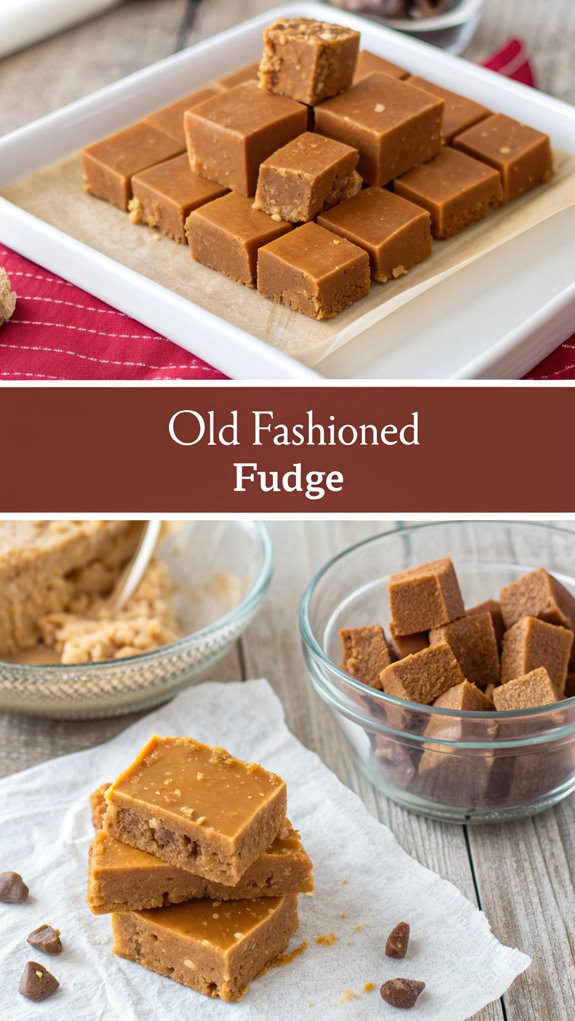
Ingredients:
– 3 cups granulated sugar
– 1/2 cup sifted unsweetened cocoa powder
– 1 cup milk
– 2 tablespoons light corn syrup
– 3 tablespoons unsalted butter
– 1 teaspoon pure vanilla extract (optional)
– 1 cup coarsely chopped walnuts or pecans (optional)
Cooking Instructions:
- In a heavy saucepan, combine the granulated sugar, sifted cocoa powder, milk, and light corn syrup. Stir the mixture over medium heat until the sugar dissolves completely.
- Once the sugar has dissolved, continue to cook the mixture until it reaches a temperature of 234°F on a candy thermometer, or until a soft ball forms when a small amount of the mixture is dropped into cold water.
- Remove the saucepan from the heat and add the unsalted butter without stirring. Allow the mixture to cool to 110°F without stirring.
- Once cooled, use a wooden spoon to beat the fudge until it becomes creamy and loses its glossy appearance. If desired, add vanilla extract and nuts during this step.
- Lightly butter a pan and pour the fudge into it, spreading it evenly. Refrigerate the fudge, covered, until firm, which should take about 2 hours.
- Once firm, cut the fudge into squares and serve. Enjoy!
To guarantee your fudge turns out perfectly, remember to use a candy thermometer for precise temperature control, as this is crucial for the fudge’s texture. Additionally, this recipe is known for its classic, homemade quality, which enhances the overall experience of making and enjoying the fudge.
Make sure to lightly butter your pan to prevent sticking, and give the fudge enough time to cool and beat it thoroughly for that creamy finish.
If you’re looking for variations, feel free to experiment with different additions like mini-marshmallows or chocolate chips!
Final Thoughts
As you wrap up your fudge-making journey, it’s important to appreciate the rich history and cultural significance behind this delightful treat.
Originating in the late 19th century, fudge quickly spread through American women’s colleges, becoming a staple at places like Vassar. By the mid-20th century, it gained commercial popularity, appearing in sweet shops worldwide. This late 19th century creation was born from a mishap in a confectionery experiment, leading to its unique soft and creamy texture.
Over time, simple recipes evolved into diverse flavors, showcasing innovation and artisanal craft. Fudge is often linked to traditions, like festivals and personalized gifts, reflecting local customs and culinary heritage.
Its timeless appeal connects generations, ensuring its place in kitchens today. As you enjoy your fudge, remember the legacy and creativity that have shaped this beloved confection.
FAQ
Have you ever wondered what makes old fashioned fudge so special? This delightful treat requires a few key ingredients: granulated sugar, unsweetened cocoa powder, whole milk, butter, and vanilla. To achieve the perfect texture, cook the mixture until it reaches a soft-ball stage, which is 234°F (112°C). Remember to stir constantly until it boils, then stop stirring once you add the butter and vanilla. This recipe has been an integral part of holiday celebrations since 1975, creating cherished memories with family and friends.
If your fudge doesn’t set, verify it cooled properly, and if it’s grainy, check your beating technique. For storage, keep it in an airtight container at room temperature for up to two weeks, refrigerate for three to four weeks, or freeze for three months. Enjoy your fudge with family and friends!
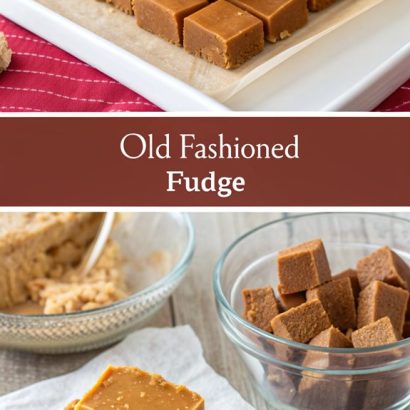
OLD FASHIONED FUDGE
Ingredients
- Ingredients:
- - 3 cups granulated sugar
- - 1/2 cup sifted unsweetened cocoa powder
- - 1 cup milk
- - 2 tablespoons light corn syrup
- - 3 tablespoons unsalted butter
- - 1 teaspoon pure vanilla extract optional
- - 1 cup coarsely chopped walnuts or pecans optional
Instructions
- Cooking Instructions:
- In a heavy saucepan, combine the granulated sugar, sifted cocoa powder, milk, and light corn syrup. Stir the mixture over medium heat until the sugar dissolves completely.
- Once the sugar has dissolved, continue to cook the mixture until it reaches a temperature of 234°F on a candy thermometer, or until a soft ball forms when a small amount of the mixture is dropped into cold water.
- Remove the saucepan from the heat and add the unsalted butter without stirring. Allow the mixture to cool to 110°F without stirring.
- Once cooled, use a wooden spoon to beat the fudge until it becomes creamy and loses its glossy appearance. If desired, add vanilla extract and nuts during this step.
- Lightly butter a pan and pour the fudge into it, spreading it evenly. Refrigerate the fudge, covered, until firm, which should take about 2 hours.
- Once firm, cut the fudge into squares and serve. Enjoy!
- To guarantee your fudge turns out perfectly, remember to use a candy thermometer for precise temperature control, as this is crucial for the fudge's texture. Additionally, this recipe is known for its classic, homemade quality, which enhances the overall experience of making and enjoying the fudge.
- Make sure to lightly butter your pan to prevent sticking, and give the fudge enough time to cool and beat it thoroughly for that creamy finish.
- If you're looking for variations, feel free to experiment with different additions like mini-marshmallows or chocolate chips!

